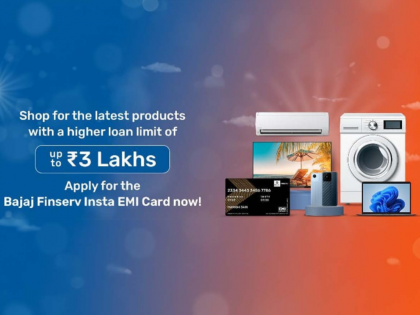Here’s Everything You Need to Know About No Cost EMIs
By Impact Desk | Updated: June 22, 2024 16:08 IST2024-06-22T15:50:29+5:302024-06-22T16:08:02+5:30
An EMI, otherwise known as ‘equated monthly instalment’ is a facility that is extended by a number of financial ...

Here’s Everything You Need to Know About No Cost EMIs
An EMI, otherwise known as ‘equated monthly instalment’ is a facility that is extended by a number of financial institutions. Generally, when you make a purchase, you make the total payment upfront. However, when you purchase a good or service on EMI, your total payment amount will be converted into equal chunks.
You’ll be required to pay these chunks in monthly instalments over a period of time. Since an EMI is technically a loan, you’ll be charged interest on your borrowing. Your total monthly instalment will include the interest amount, the rate of which is predetermined. Apart from this, you may also have to make a single, non-recurring payment towards taxes, down payment, and processing fees.
Many people prefer to make big purchases on EMI as it prevents them from dipping into their savings. However, a major drawback of a regular EMI is the interest, as it can drive up your overall repayment liability by quite a bit. If you’re looking for an EMI card, consider applying for the Bajaj Finserv EMI Card.
How is a No Cost EMI Different from Regular EMIs?
If you’re wondering, ‘how does a No Cost EMI work?’, the answer is quite simple. A No Cost EMI is quite similar to a regular EMI in most ways except one - you won’t have to pay anything towards interest. This is provided that you make all your payments in full and on time. In case you do miss a payment or make a partial repayment, interest charges will most likely be applicable on the outstanding amount. In addition to this, you may also have to make a late payment fee.
Even though you’re not paying any interest, a No Cost EMI is still a debt and will be treated as such. What does this mean for you? Well, if you fail to make repayments on time, the creditor can take legal action against you and may report the non-payment to credit bureaus.
This can cause your credit score to fall, making it difficult for you to access many financial services and products.
What are the Benefits of No Cost EMIs?
Let’s now take a look at the bright side of No Cost EMIs. This financing option has become increasingly popular these days, thanks to growing lifestyle aspirations and attractive offers.
Here are some of the advantages of No Cost EMIs:
● You don’t have to pay any interest on your borrowing
● Processing fees and other charges involved are quite nominal
● Opting for small, No Cost EMIs can help boost your credit score
● No Cost EMIs help you plan your finances effectively
● You can park your excess funds in more productive avenues
Things to Consider Before Opting for No Cost EMIs
Now that you’re well acquainted with the benefits of No Cost EMIs, let’s take a look at some things that you need to keep in mind while opting for this facility.
● Processing Fees
Most EMI facilities, whether interest-free or not, come with processing fees. Fortunately, these fees are pretty nominal, think 1% to 5% of the total borrowing. However, sometimes, the processing fees may be quite high. It’s best to stay away from high processing fees as they can drive up your repayment liability by quite a bit.
Make sure to always take a look at your processing fee structure before deciding whether or not to opt for the EMI facility.
● Understand your Repayment Plan
Before making a financial decision, it is important to take a look at your current financial position. This will help you understand how much you can afford to pay as EMI. Next, make sure you take a look at your EMI repayment structure to understand the monthly contributions and evaluate if it is something you can comfortably afford.
A general rule of thumb is that your total repayment liability should not exceed 40% of your total income. However, ideally, you should aim to keep your debt repayments lower than this.
● Avoid Falling into Debt Traps
EMIs, particularly No Cost EMIs, are often the first step towards revolving debt and debt traps. No Cost EMIs make it incredibly easy to stretch ourselves too thin. However, you should only buy something on EMI if you cannot afford to pay for it upfront. Ensure that your savings and investments don’t suffer because of the EMI payments.
No Cost EMIs are a nifty facility that can help you manage your finances better and make purchases without dipping into savings. There are a few different ways to enjoy No Cost EMIs - through debit/credit cards or with the help of a dedicated EMI card like the Bajaj Finserv EMI Card.
You can use the Bajaj Finserv EMI Network Card for online shopping. With this card, you can purchase over a million products on No Cost EMI by making a small or no down payment.
Open in app